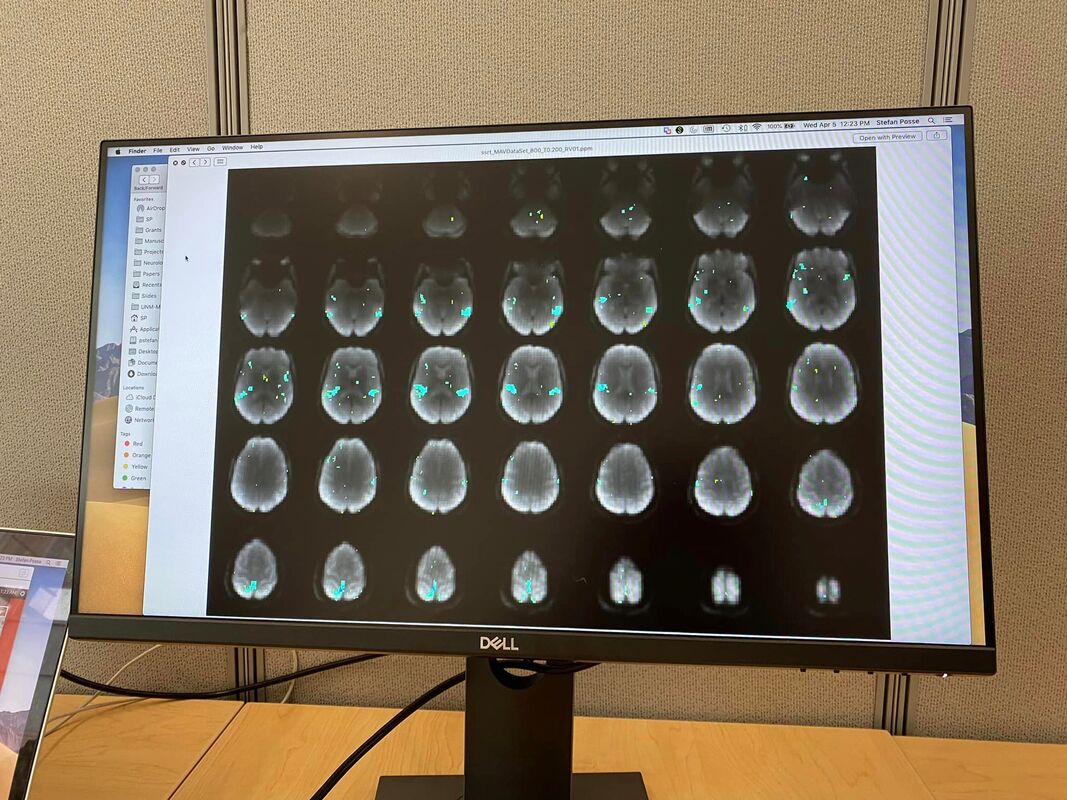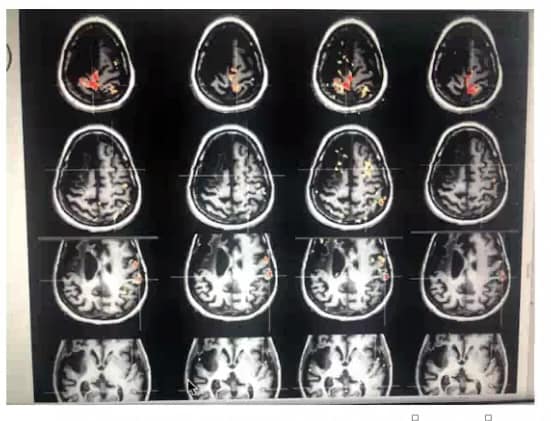 Neuroscientists witnessed the brain lighting up 'like a Christmas tree' during a groundbreaking research project looking into how reflexology affects the brain. In the research project 'Neural Pathways of Applied Reflexology', even the team’s most sceptical scientists were stunned after analysing the data from thousands of brains scans taken while participants were receiving foot reflexology. The images were captured using functional magnetic resonance imaging (fMRI), which monitors changes in blood flow and oxygen levels in the brain. The results of these studies raise important questions about the inter-connectedness of the human body and the validity of reflexology as a powerful therapy. Last week, reflexologists Kevin and Barbara Kunz launched the results to the reflexology community. Kevin and Barbara helped to run the project and are also researchers in their own right and published authors. Here is a summary of the incredible findings that Kevin and Barbara shared, based on the webinar to the reflexology community in May 2024. “This study is not only going to change the way we view reflexology, it's going to change the way we view how the human body operates.” About the research on reflexology and the brain When Dr Stefan Posse walked into his very first reflexology session, on the encouragement of his wife, Kevin could tell straight away that this esteemed professor and physicist was sceptical about whether the therapy would really work. Following the session, the physicist – who also runs an MRI research lab at the University of New Mexico – was certainly intrigued by the practice. In fact, that reflexology session was enough to spark the makings of an entire research project looking at the impacts of reflexology on the brain. Over the coming months, Dr Stefan joined forces with Kevin and Barbara, together with a small team of other doctors and researchers also interested in the mind-body connection. Fast-forward four years and we now have prelimary results from their investigations, based on two fMRI studies run at the University of Minnesota’s School of Medicine. Brain scans taken during reflexology The first part of the research study happened in April 2023. Using a small group of healthy participants, the team investigated the effects of reflexology on blood flow and oxygen levels in the brain. The study used cutting-edge technology to collect real-time brain scans of each participant while set reflexology techniques were applied to the feet. Once the reflexologists had applied the pressure, the researchers naturally expected the imagery to show activations in the sensory-motor cortex related to the feet. What was startling was that deeper parts of the brain were activated. Not only that, some of the areas of the brain that were activated had no direct connection to the feet. What’s more, the areas being activated were consistent across the study’s participants. Ultimately, the unexpected happened. Reflexology lights-up the brain ‘like a Christmas tree’ Following the initial results, Dr Stefan and his team ran a further study in September 2023, this time comparing the same group of healthy participants with a group of stroke patients. Each of the patients had all experienced a stroke within the last 4 to 17 years. In Kevin’s words, the researchers and neuroscientists were ‘blown away’ by the results of both studies. Dr Stefan even commented that he witnessed the brain ‘activated like a Christmas tree’ during the fMRI scans. “We saw unexpected changes in the blood flow to specific parts of the brain," shared Kevin. Whereas the neuroscientists naturally expected to see real-time changes in the brain's sensory motor cortex when the participants received reflexology, the changes in blood flow went 'way beyond' this part of the brain. In essence, the preliminary results show how foot reflexology activates deeper parts of the brain that are not connected to the feet. “This study is not only going to change the way we view reflexology, it's going to change the way we view how the human body operates.” How reflexology affects the brain A reflexology session will often see you drifting away to what feels like another time and space. Some clients describe it like being in a deep meditation, and many report improvements in their symptoms following the session – and especially after a course of treatments. What the research showed is there’s a lot more going during a reflexology treatment than previously thought. Here’s a little run-down of what they found through these studies. The insula cortex was one of the areas of the brain found to be activated across all participants. Buried deep within the brain, Dr Stefan refers to the insula as the ‘seat of consciousness’. This cortex is linked to our psyche and emotional state. Notably, it controls and regulates different parts of our nervous system and plays an important role in psychiatric disorders. Another area of the brain that consistently lit up was the supramarginal gyrus. This part of the brain plays a role in the body-mind connection and our sensory fields. Working with other parts of the brain, this gyrus helps us to process information from our inner and outer worlds. Finally, the middle temporal gyrus was part of the brain that was consistently activated among stroke patients who participated in the study. Memory, understanding language and processing emotions are all functions of this area. It also helps us to visually recognise familiar faces and objects. Interestingly, the middle temporal lobe is the earliest region of the brain to show atrophy during Alzheimer’s disease. Limitations to the research There were a few downsides to the study, the main one being the small sample size of participants. As a proof of concept study, just eight subjects were sampled among the two groups of healthy participants and stroke patients. Another downside was that the techniques had to be applied in ‘on-off block patterns’ to isolate the effects of each reflex within the fMRI scans. In comparison, the reflexes during an actual reflexology session would be worked much more thoroughly and without the set intervals between each reflex. Finally, the reflexes that were accessed were not consistent across the two groups. This was mostly due to the physical limitations of the fMRI equipment and difficulties working within a closed space, especially with the stroke patients. To illustrate, within the group of stroke patients, the reflexologists worked the reflexes on both feet that correspond with the eyes, vagus nerve and brain stem. With the healthy participants, the reflexologists worked the pituitary gland, eye, vagus nerve, adrenal gland and temporal lobe, but only on the left foot. The researchers emphasise that this was a prelimary study. Certainly, they are the first to agree that more research is needed. Despite each of the limitations, the neuroscientists still stress the robustness of the data due to the findings being consistent within each group of participants. What’s next for fMRI reflexology? In Singapore earlier this month, Dr Stefan presented the study to 5,000 scientists at the annual meeting of the International Society for Magnetic Resonance in Medicine. Following this presentation, him and his team will be writing an academic paper sharing the results of the pilot study. I’ll share the paper as soon as it comes available. Larger trials and with even better technology are planned for the future. In fact, they have already applied for grants for further research studies. Also of note, one of the more sceptical researchers on the team was so astounded by the results that he’s looking into running further research himself. In the meantime, if you want to watch the full webinar covering the prelimary results, Kevin and Barbara have kindly made it available for everyone to watch on YouTube. Other reflexology research Although more trials and studies are needed to delve into the benefits of reflexology, double-blind studies and clinical trials have already been carried out. Take a look at summaries of some of the more prominent research projects so far.
4 Comments
LIDON
28/5/2024 07:43:39 pm
Thanks for this review and summary which I found very interesting.
Reply
Helena Drewes
25/6/2024 04:21:09 pm
This was really interesting. I teach reflexology in Denmark, and me and my collages will very much like to translate your article . Can I send you and e-mail?
Reply
Your comment will be posted after it is approved.
Leave a Reply. |
Reflexology newsExplore news and insights from the world of reflexology. Get the latest news
Reflexology news and special offers, direct to your inbox. Unsubscribe any time.
|
|
Reset and rebalance from the feet up.
Personalised reflexology in Albany, WA. |
Barefoot Holistics is based at:
Albany Centre of Natural Therapies 5 Young Street Albany WA 6330 Western Australia Call or text Toria on: (+61) 0477 069 164 |
Reflexology is a complementary therapy designed to promote overall wellness and is evidenced as helping with relaxation and stress reduction. It is not intended to diagnose, treat or cure any medical conditions. Treatments should not be considered a substitute for conventional medical care. This website and its contents are for informational purposes only and should not be interpreted as medical advice.
© 2025 Barefoot Holistics | All Rights Reserved
Privacy policy | Terms and conditions
Website by writerfortheweb
© 2025 Barefoot Holistics | All Rights Reserved
Privacy policy | Terms and conditions
Website by writerfortheweb





